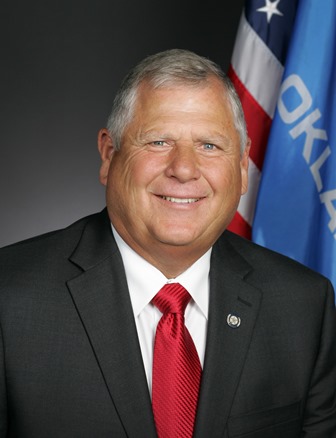In order to provide equal access and equal opportunity to people with diverse abilities, this site has been designed with accessibility in mind. Click here to view
Sen. Allen announces second meeting of 2018 Energy Summit
 Sen. Mark Allen
Sen. Mark Allen
Sen. Mark Allen, chair of the Senate Energy Committee, announced Thursday there would be a second meeting of the 2018 Energy Summit to examine the economic impact of alternative energies in Oklahoma, including wind, solar, hydropower and electric. The second meeting will be held on Wednesday, January 31, at 10:00 a.m. in Room 535 of the state Capitol. The meeting will be live-streamed.
Allen said that as lawmakers work to address budget and revenue issues, it is crucial for them to understand the importance of the energy industry in terms of jobs, economic impact and state revenue from a variety of tax categories.
“I think the presentations at our first meeting did an excellent job of showing how you cannot simply look at one area of taxation when comparing Oklahoma to other states. You have to take a more comprehensive look at all the ways these industries and their employees contribute directly and indirectly to the state’s economy and revenue collections,” said Allen, R-Spiro. “This industry supports 1 in 6 jobs in Oklahoma. We have to look at the big picture, as well as the unintended consequences that could actually cost jobs and negatively impact our local and state economies.”
Presentations at the first meeting included a comparative study of the 16 largest producing oil and gas states. The study not only looked at severance taxes, but other areas, including ad valorem, income and sales taxes. The study pointed out that some of those states had no personal income tax, while others had no sales tax.
“We learned with recent changes, Oklahoma has the fifth highest effective rate across the four taxes examined. If the two percent GPT is raised to four percent, we would be ranked third and if it’s raised to seven percent, we would be the second highest,” Allen said. “Before additional tax changes are made, we need to carefully examine how that could impact employment.”
In addition to oil and gas, there were also presentations on the impact of the coal mining industry in Oklahoma.
Allen noted the coal industry provides well-paying jobs in some of the highest unemployment areas of the state. Oklahoma has made a minimal investment through a tax credit that produces far more in economic benefits for our state than it costs.
“For example, look at AES Shady Point in Leflore County where I live. They receive a tax benefit of about $4 million, but they return $26 million in revenue to the state. The loss of that credit would likely result in the loss of about 2,000 jobs in that county, which already has one of the highest unemployment rates in the state. The effect would be devastating for Oklahoma citizens,” Allen said.
 Oklahoma Senate
Oklahoma Senate

